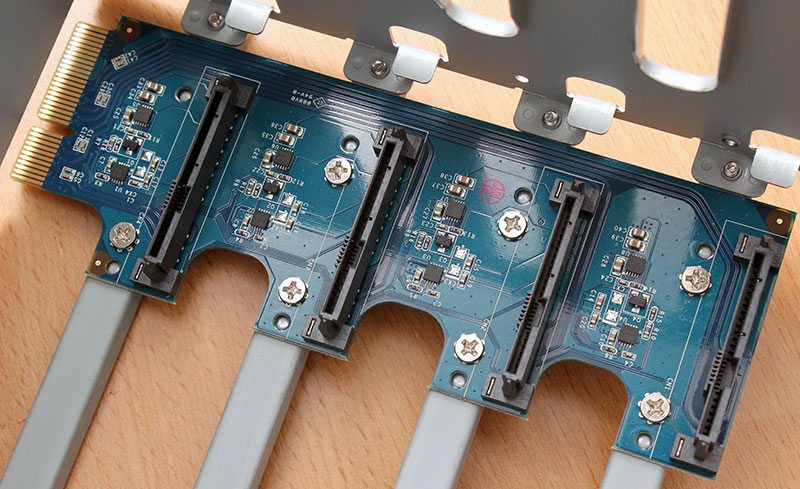Synology DS414 4-bay NAS Review
Chris Hadley / 11 years ago
A Closer Look
The first thing that I’m sure many users may find with the DS414 (unless they’re upgrading from a similar model), is how light the unit is. Given the number of units that I’ve reviewed, this is probably one of the lightest – if not the lightest system given its size and capacity. (For reference we are talking about ~2kg without disks). This lightweight build is down to the plastic body and a minimal metal frame inside for holding the drives in place along with the motherboard.
The outside of the DS414 has a textured matt finish and on the front of the unit is a removable plastic cover which has a gloss finish adding a little bit of contrast to the design.
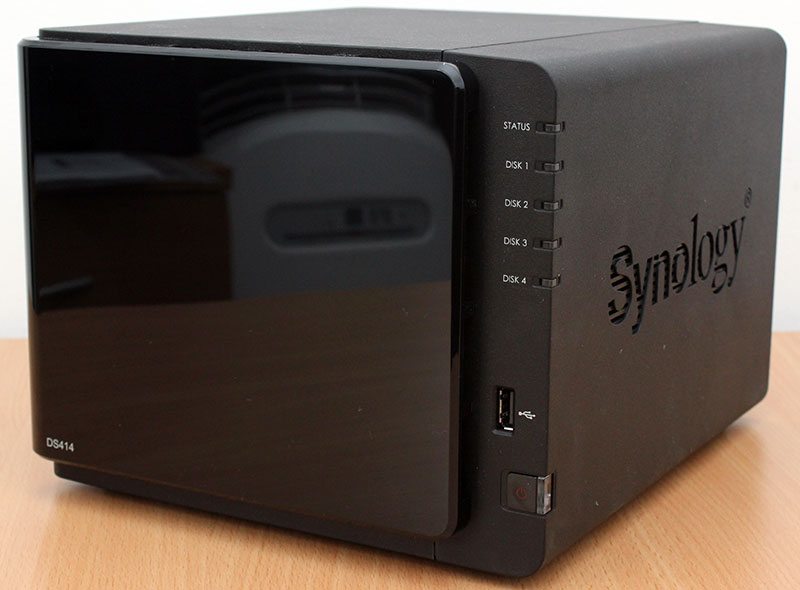
Towards the top right corner is a series of LEDs to show the status of the system as a whole along with the individual drives.
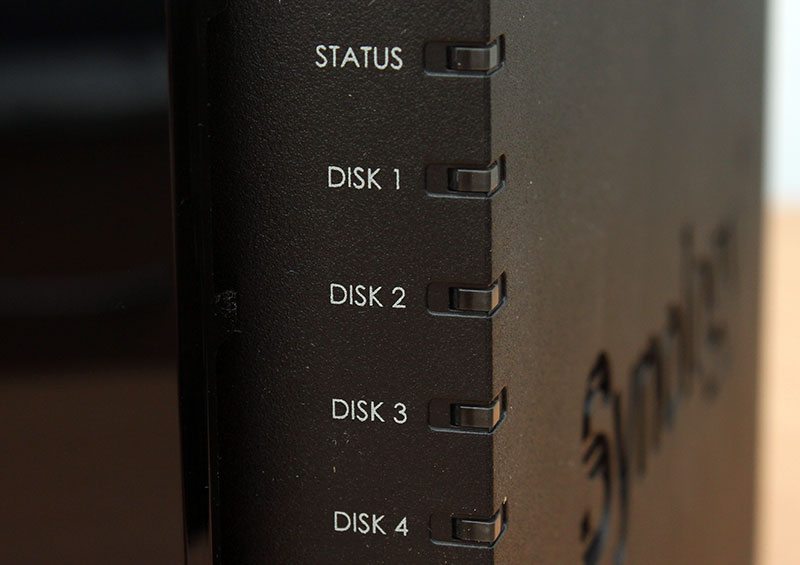
Below the status LEDs is a front mounted USB2.0 port, below which is a power button with blue LED that lights up the right hand edge when on. As we can also see, the front cover of the NAS does attract a few fine bits of dust when the protective cover has been removed, however after a period of time, this light static charge does dissipate leaving a clean front view.
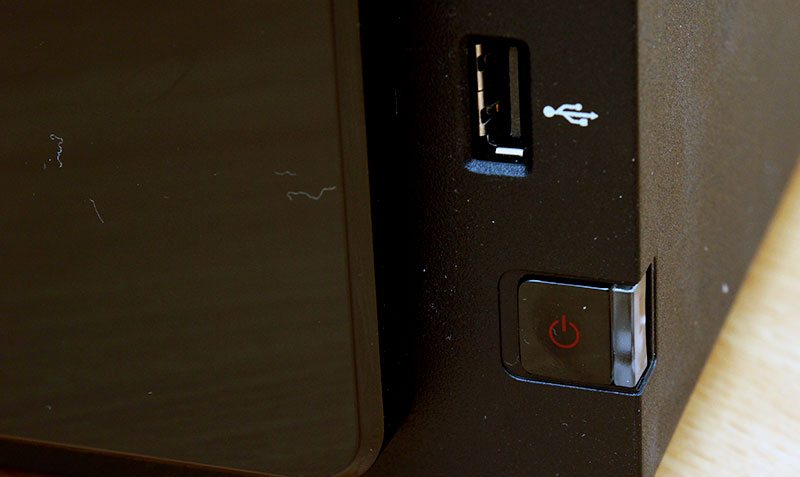
Like some other systems that I’ve seen, the DS414 does have a cover to the four drive bays (after all, seeing a line of disk trays is not always going to be glamorous in a home location), but there is no hinged door as we would typically see. Instead, Synology have kitted this unit out with a fully removable cover that easily pushes back in front of the drives with four rubber lugs in each corner. A simple and no fuss approach to hiding the drives away.

The four drive trays are held in place by a simple plastic latch. Pushing this up allows each of the trays to be pulled out via the handle that can be found on the front of each tray.
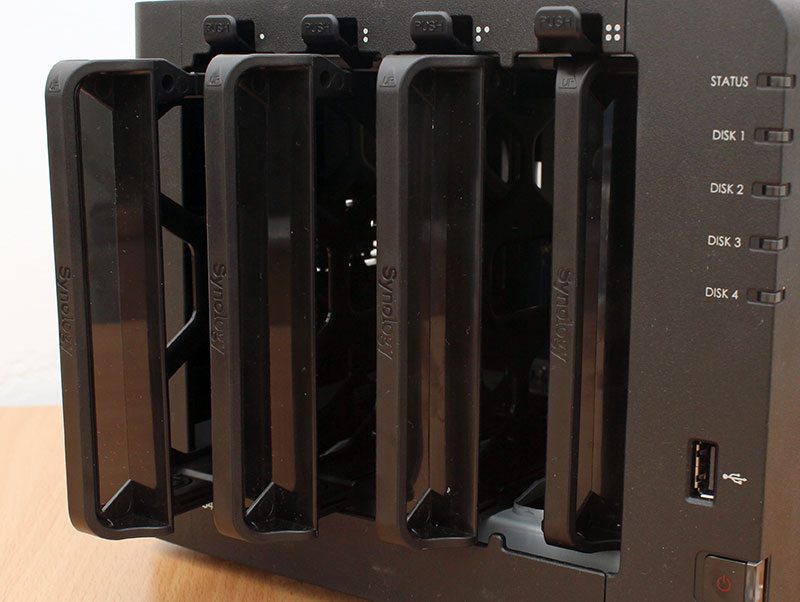
Above the drive bays is a series of dots that show each of the drive bays numbers. We can also see that the trays have a little up arrow on the handles to avoid any confusion when reinstalling the drive trays.

Turning the system around, it’s safe to say the cooling has been taken care of very well. Two large fans draw plenty of air through the unit to keep everything cool.
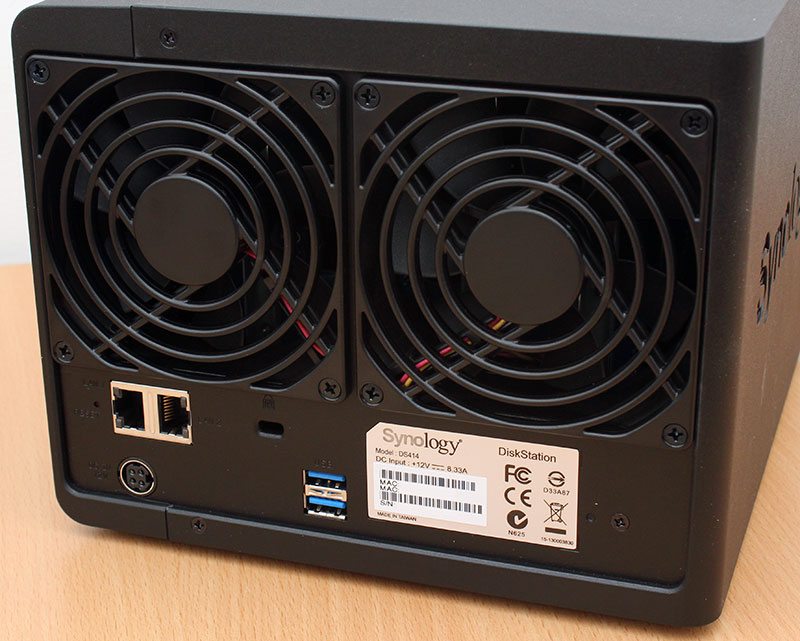
Below the fans, the DS414 comes with dual Gigabit LAN, two USB3.0 ports, a Kensington lock point, 12v DC power input and a system reset button.
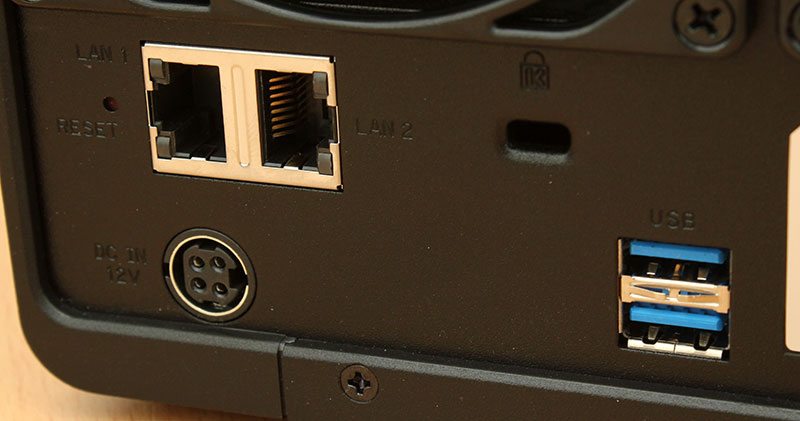
Synology have chosen have a completely tool-free installation method for mounting a hard drive (unless you decide to use 2.5″ drives, where the included screws will be required). Along each side is a snap-on rail that has a series of pins which poke through the sides of the tray and into the screw holes on the side of a 3.5″ drive. This makes for a very quick installation as each drive can be loaded in to the tray and then the NAS in literally seconds.
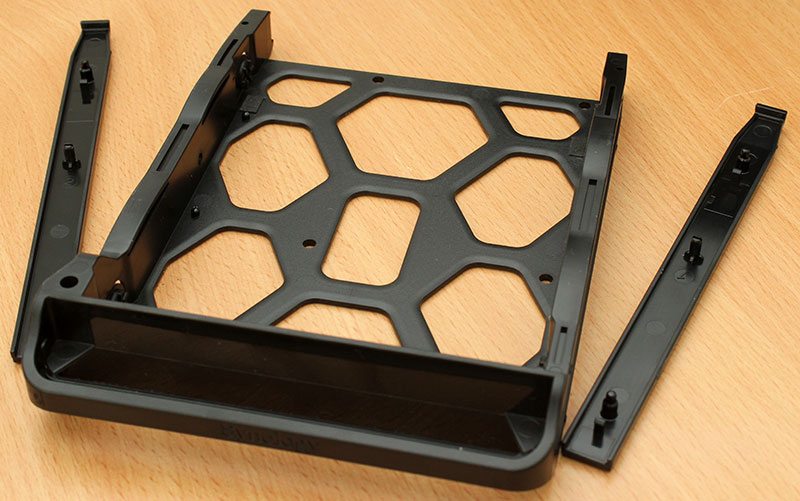
With all the user visible parts seen, it’s time to dive inside to the heart of the DS414. The system is a little fiddly to get apart with a similar method of opening like we saw with the DS213j, although it should be noted that this will void your warranty as there are no user serviceable parts to be found inside.
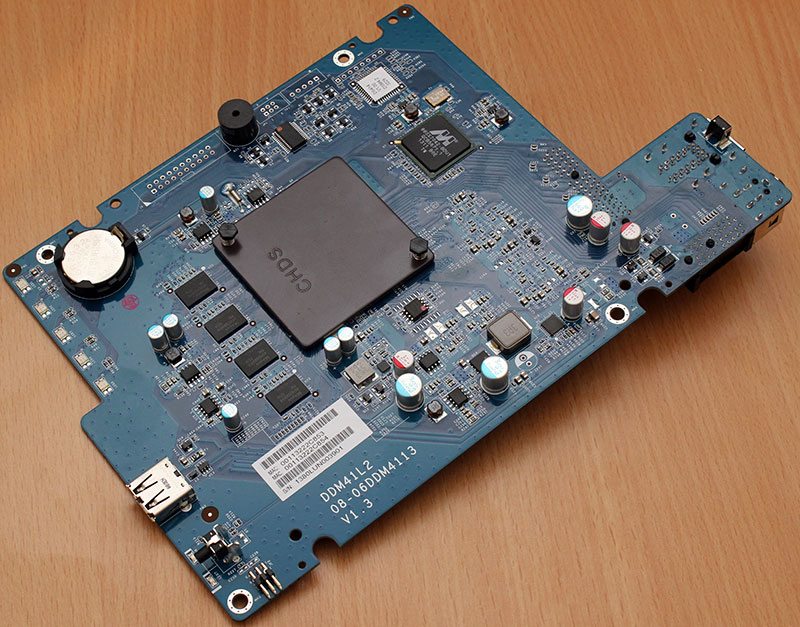
On board, the DS414 has 1GB of DDR3 memory courtesy of four streamlined SK Hynix H5TQ2G83CFR IC’s. By using these trimmed IC’s, Synology can keep the memory bandwidth up whilst reducing the overall cost of production.
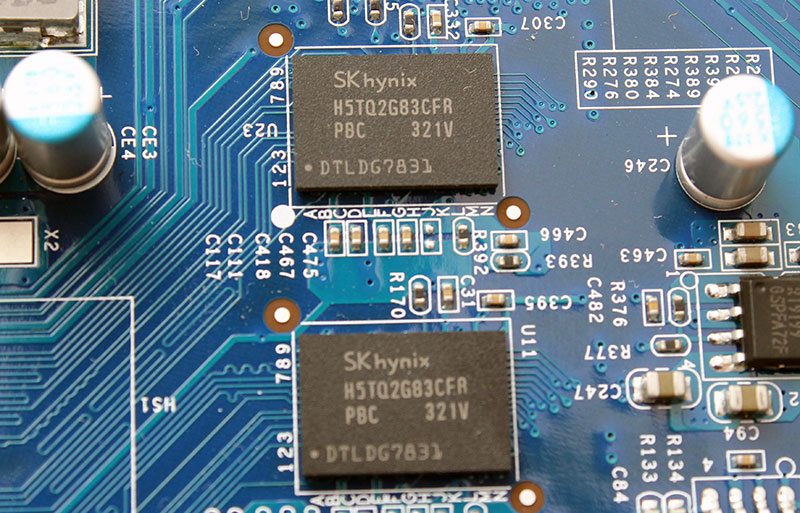
At the heart of the 414 is a dual core 1.33GHz ARM CPU. There has been a number rumours going around that the DS414 will support on chip transcoding, however I can confirm that this unit will NOT support this feature. Keep an eye out though as I will have more information on this in the near future.
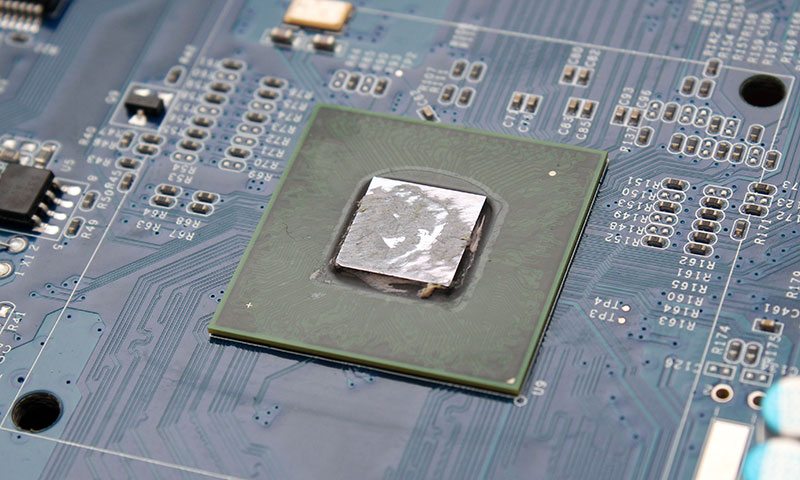
The DS414’s storage is provided courtesy of Marvell’s 88SX7042 4-port SATA-II RAID controller. Given the bandwidth limitations of Gigabit LAN, it’s easy to understand why a more expensive SATA-III controller is not used. To the left of this is the firmware IC showing its compatibility with DSM 4.2 and above.
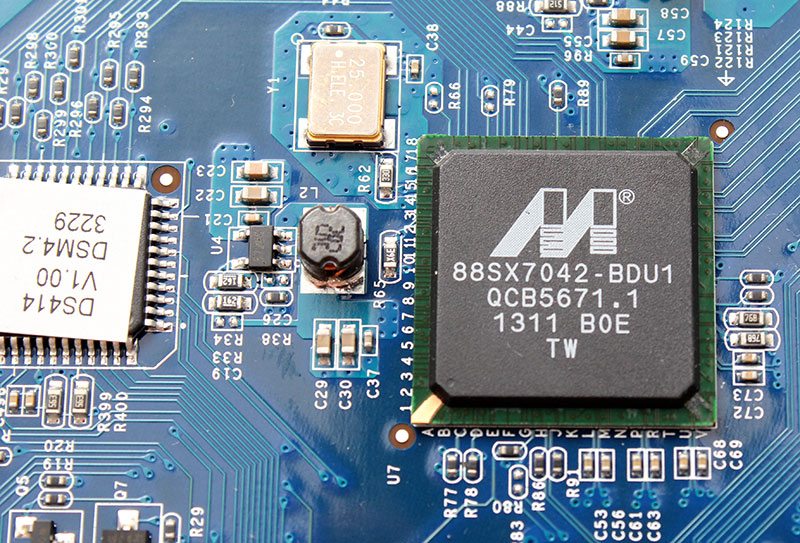
Towards the back edge of the PCB we find the dual Gigabit Ethernet ports, DC power Jack and a pair of PCIe slots for the SATA and USB daughter cards to connect to.
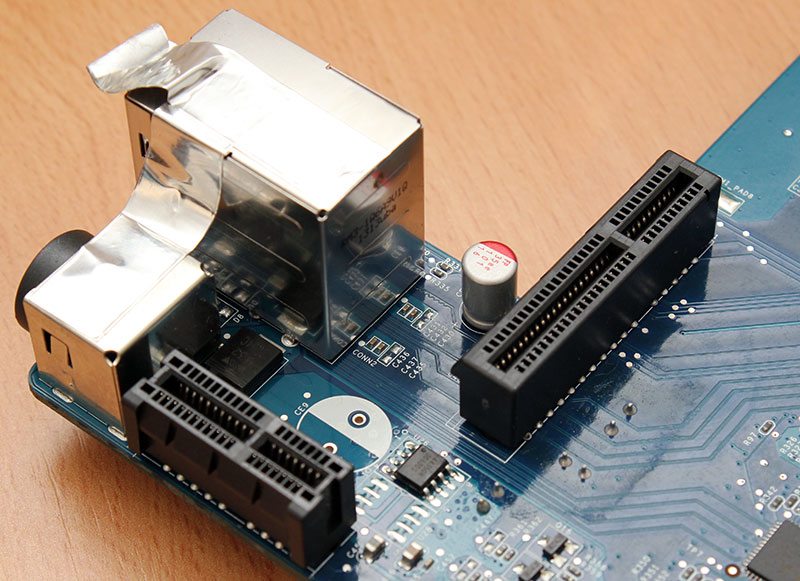
Back round on the front edge of the PCB, we can see where the power button gets its LED illumination with the sole USB3.0 port mounted to its left.
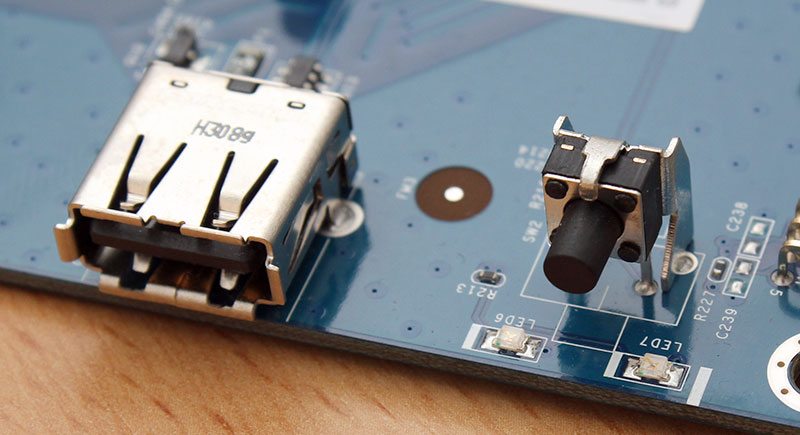
Finally in the upper side of the PCB is a line of SMB LEDs for disk and system status.
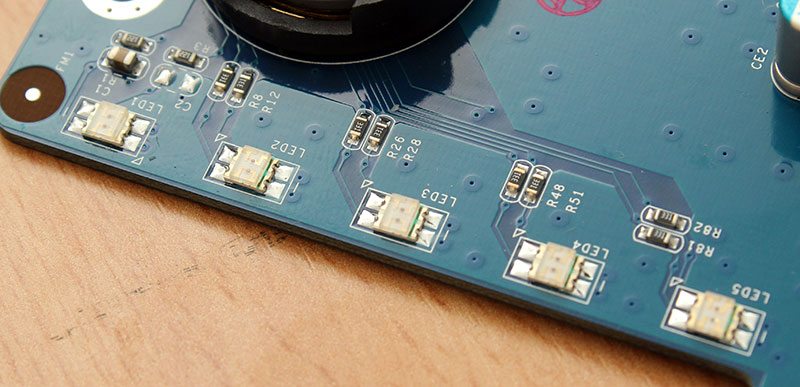
Turning the PCB over and having a look at the underside, there is little to see apart from a pair of identical looking chips near the systems Ethernet ports.
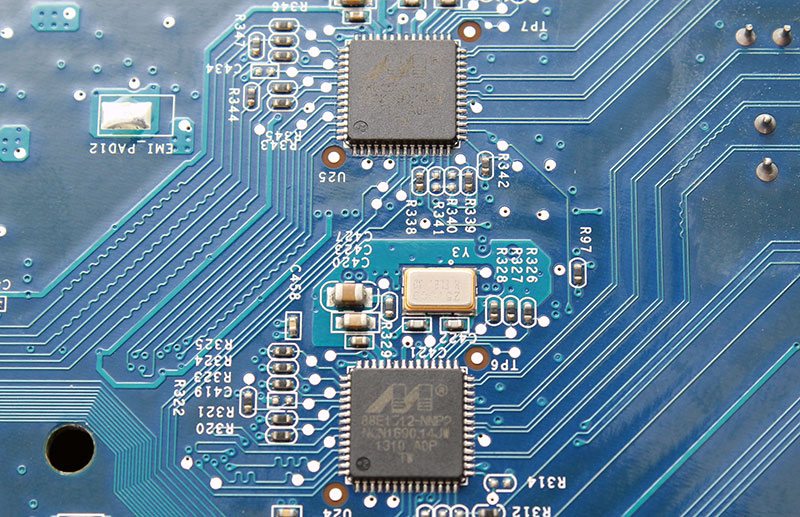
Looking a little closer we can see that like the RAID controller, the LAN is handled by Marvell with a pair of 88E1512-NNP2 Gigabit Ethernet controllers. Each controller is only capable of handling one network interface, but two are provided to give the system its LAN bonding capabilities.
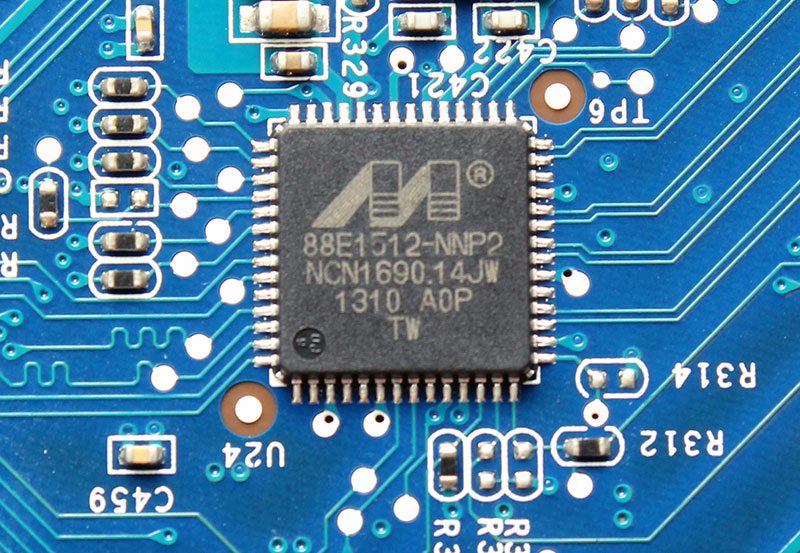
Placing the motherboard aside and having a look at the first of the two daughter cards that the DS414 has, this smaller PCB is home to the USB controller and twin USB3.0 ports. On this board is also an eSATA interface, although this feature is redundant on this particular model.
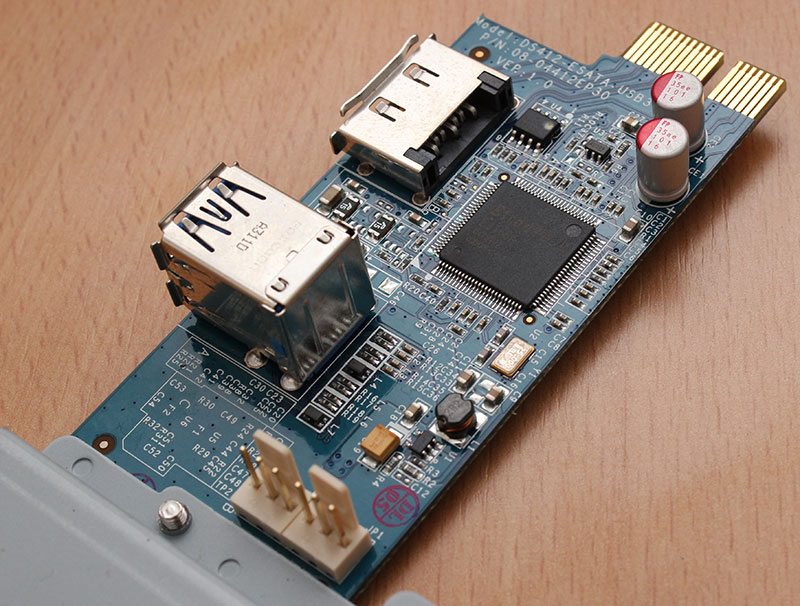
Like the DS213j that I recently looked at, EtronTech’s EJ168A is the controller of choice for the USB3.0 interface.
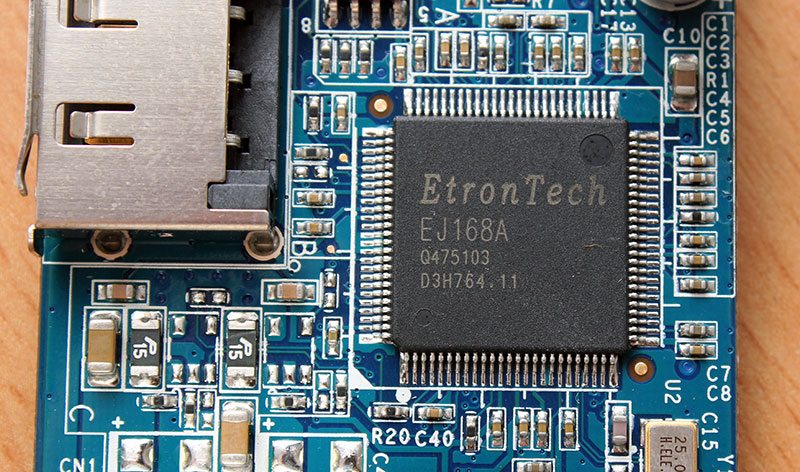
The second, slightly larger daughter card is much more simple and provides the four SATA power and data interfaces for connecting drives into the system.
